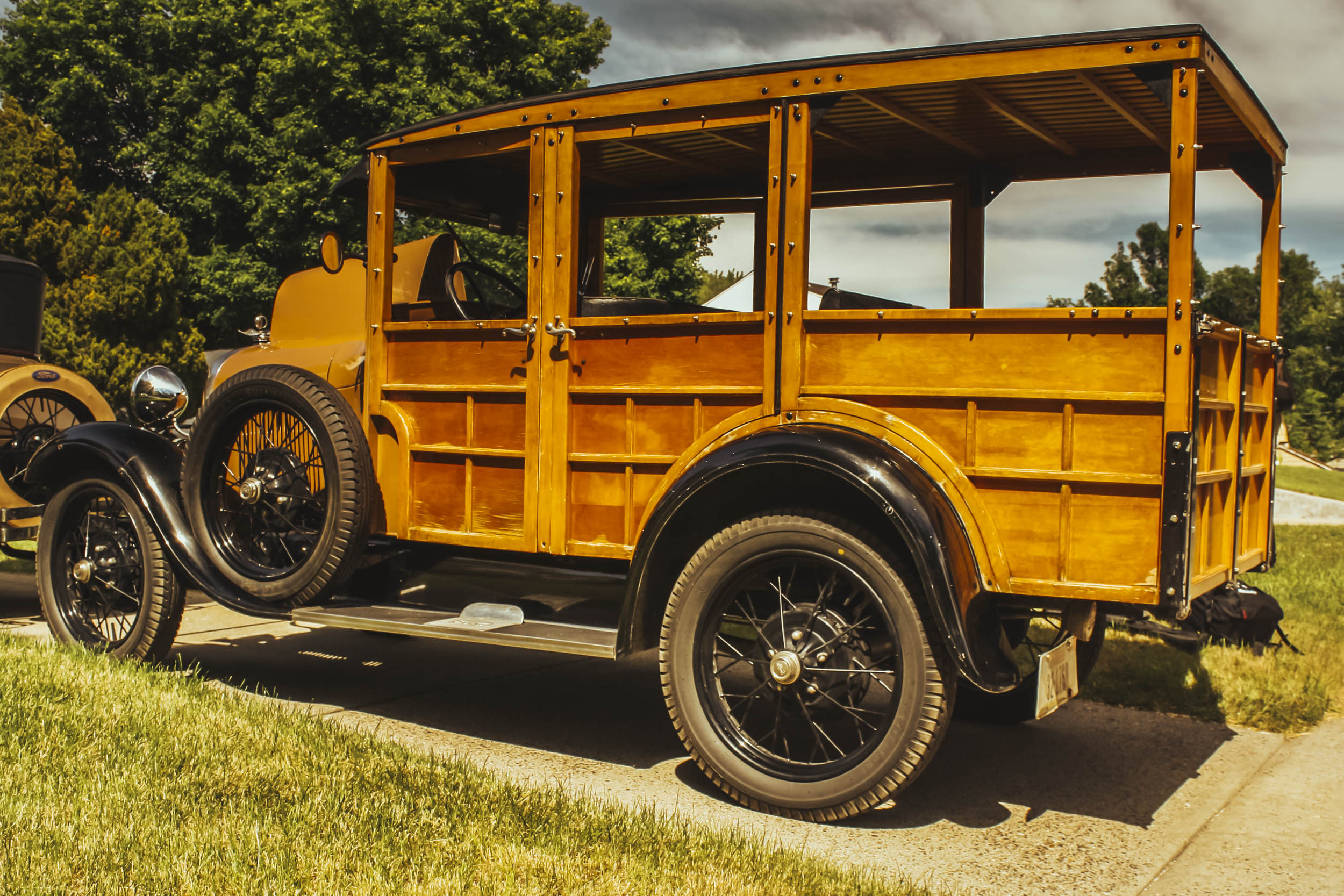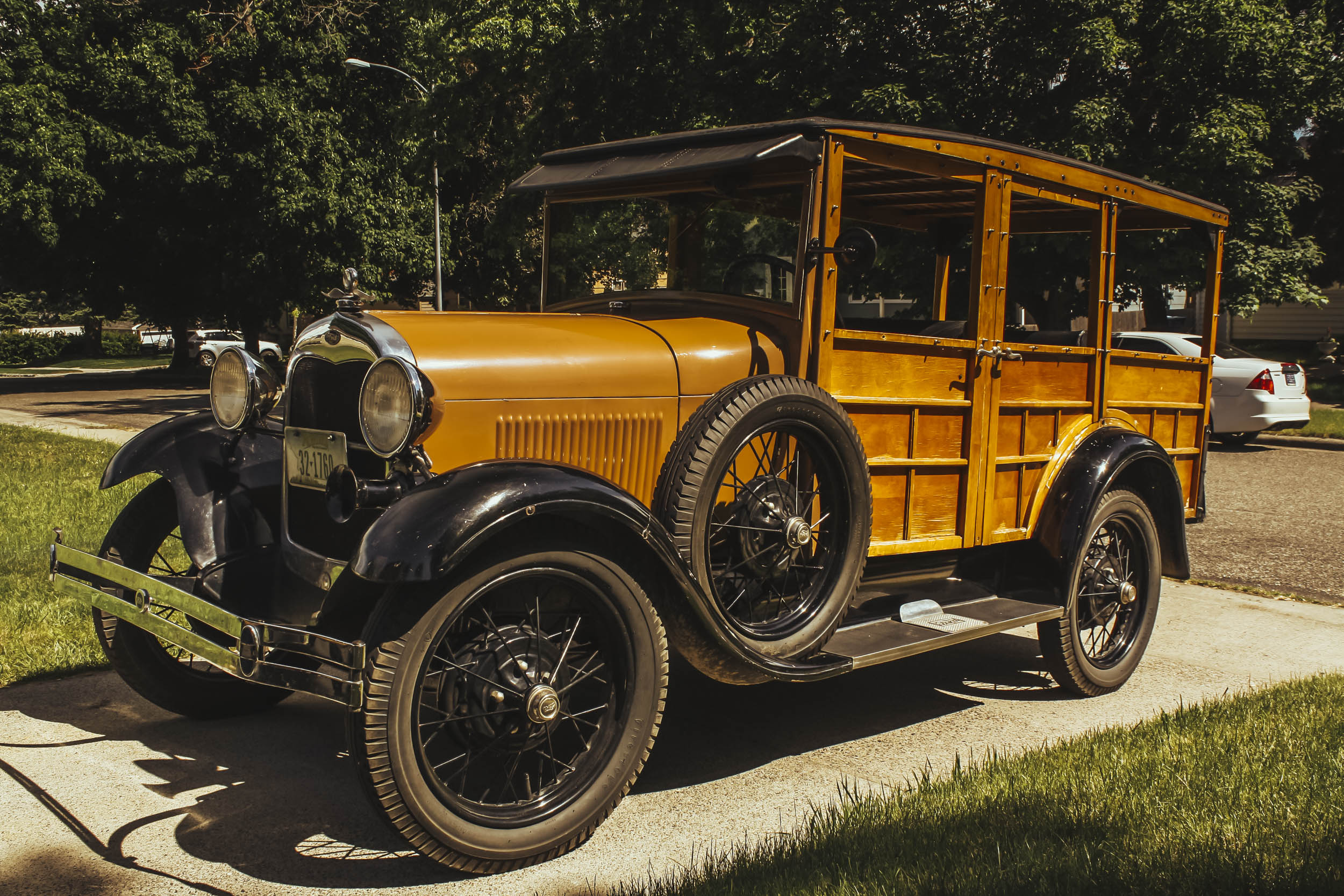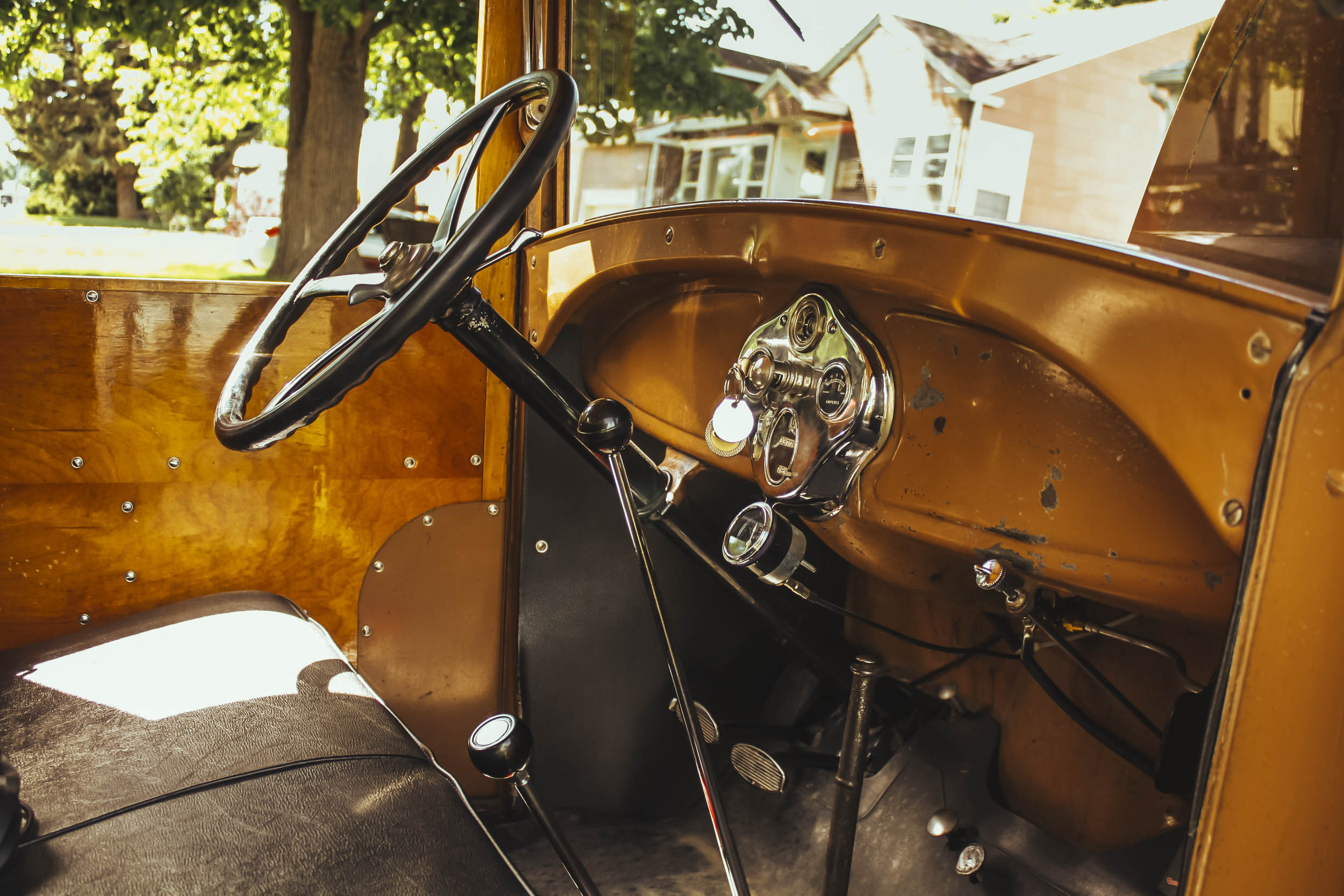Why pine for the good ol’ days when you can have them now?
We first met members of the Magic City Model A’s more than 140 miles from home, parked in front of the local Western Museum. There were six Model A Fords parked in a neat row, and not a single “modern” support vehicle appeared to be traveling with them. The cars represented the wide range of body style’s available, from Bob Voight’s 1929 Model A Business Coupe to Jim Beley’s 1929 “Woody” Model A Station Wagon.
We asked Voight if there were any support vehicles in the convoy, and he scoffed. All club members carry tools and spare parts when they go on a tour, and they make their own repairs. No support needed.
The club, based in Billings, Montana, boasts 73 running Model As and 101 members. Shorter two- or three-day tours happen once a month, with a longer trip each year. This year, club members are driving from Billings to Boise, Idaho, an 800-mile round trip that’s expected to take more than a week at their relaxed pace. Again, with no support vehicles.

What does it take to make a pre-war classic Ford highway worthy? The answer may surprise you: not much. “Some members drive them stock,” Voight explains. The groups typically drives 50–55 mph, far slower than the 80-mph speed limit on most highways in Montana, but much easier on the cars that were often driven on primitive and rough roads when new. Although some purists like to keep their Model A stock, Voight and Beley believe a handful of changes are both pragmatic and necessary.
The most common modifications that club members make are related to safety and reliability. Smaller modifications are often made too, things like installing LED lights in the turn signals and modern headlights that produce more light with the six volts available from the 1920s electrical system. Another change is switching from plate glass to safety glass.
Larger modifications include the engine and transmission, but they’re not modified as much as you might think. Common engine upgrades include a higher compression head and high-lift camshaft, which can give as much as 10 additional horsepower. Larry Malmstrom, the Magic City Model A’s president, explained that the heads make all the difference on hills. “When you’ve only got 40 horsepower, an additional 10 really helps,” he says. That’s the difference between maintaining 50 mph up a grade and dropping down a gear.

The second under-hood upgrade is swapping the generator for an alternator. Voight explains the original generator has an extra adjustable brush for generating additional electricity, and the driver sets this brush to fit the condition and demand of the electrical system. Driving at night and using the headlights? Better get a few more amps out of it. Driving during the day? Better set it a bit lower. If you get it wrong? “Well, you could boil the battery,” Voight explains. The generator doesn’t have a voltage regulator like a modern alternator.
As a less demanding solution, many have swapped in a “one-wire” alternator, complete with voltage regulator.
A modern touch enjoyed by Model A owners with an urge to tour is the Mitchell Manufacturing overdrive. The unit is effectively a gear splitter with a high and low gear that gives the Model A six, instead of three, forward gears. While on the road the engine goes from a buzz to a hardly-noticeable hum when Beley shifts the station wagon from three “LO” to three “HI.” The overdrive is synchronized, so double-clutching isn’t necessary when shifting to high gear. Mitchell Manufacturing also offers a fully-synchronized Model A transmission, Voight says, while giving Beley a knowing glance. “We had Jim’s transmission open and it doesn’t look anything like it should,” Voight explains. The synchronized gearbox in the Woody lets Beley shift without double-clutching.

Despite a list of recommended maintenance before every tour, things can and do go wrong with the cars. However, the majority of the mishaps can be fixed quickly on the side of the road with a basic set of tools. Even blowing a head gasket isn’t trip ending: 45 minutes and a new one can be swapped in with the right help.
“I remember on a recent trip one member had their generator go out,” Malmstrom says. “In the time it took to walk to the back to get his spare, the other club members had removed the bad one and were waiting for him to hand over the spare to be installed.”


















